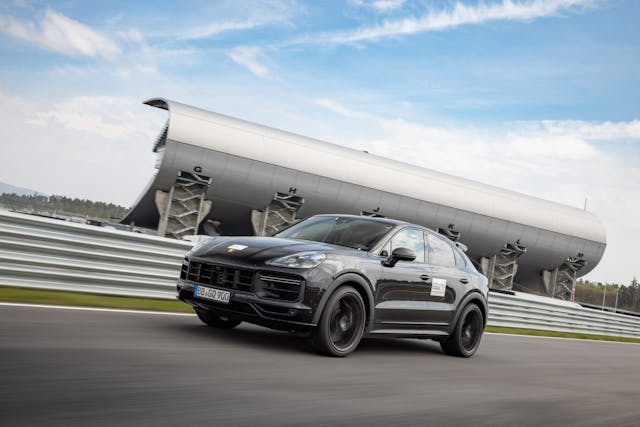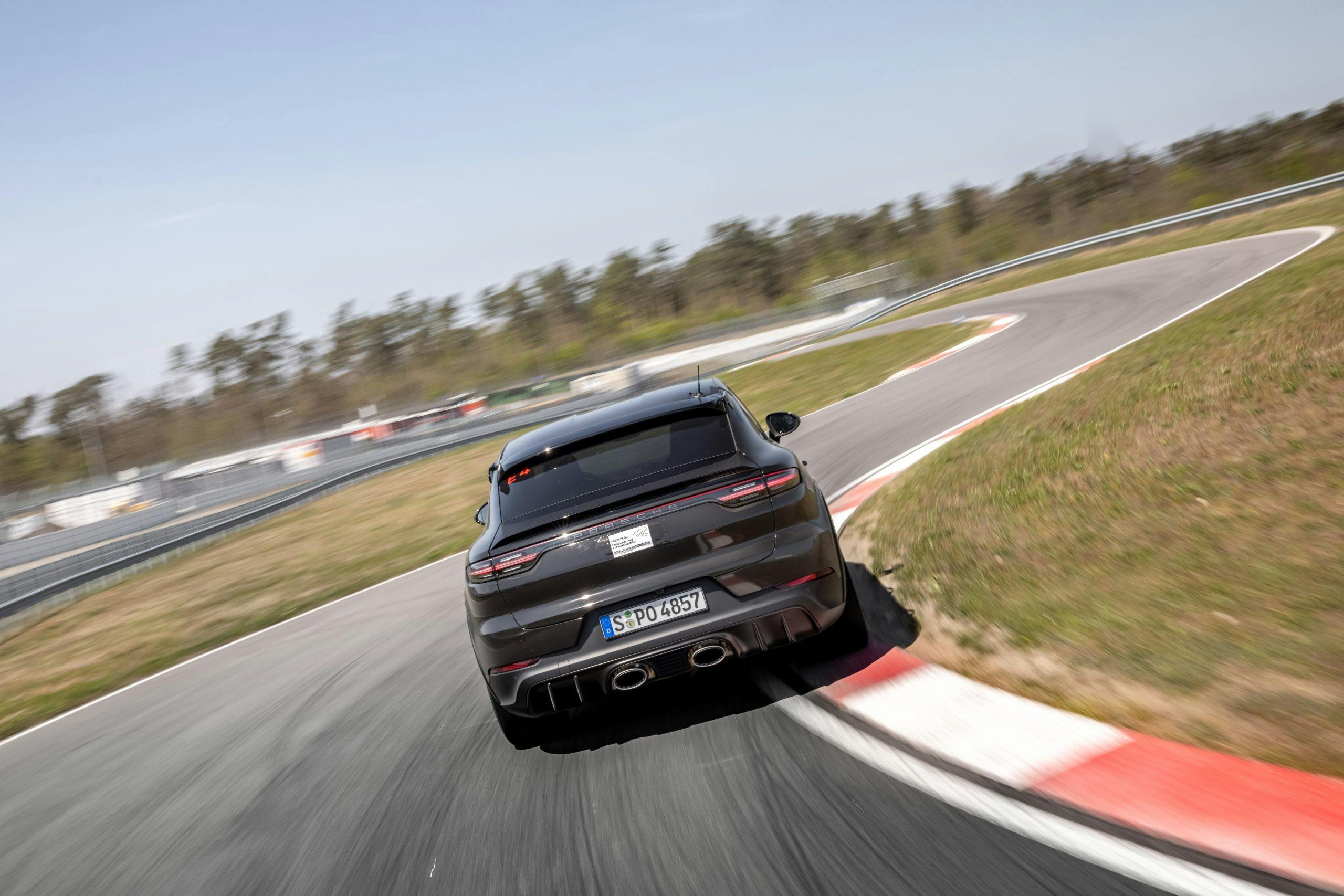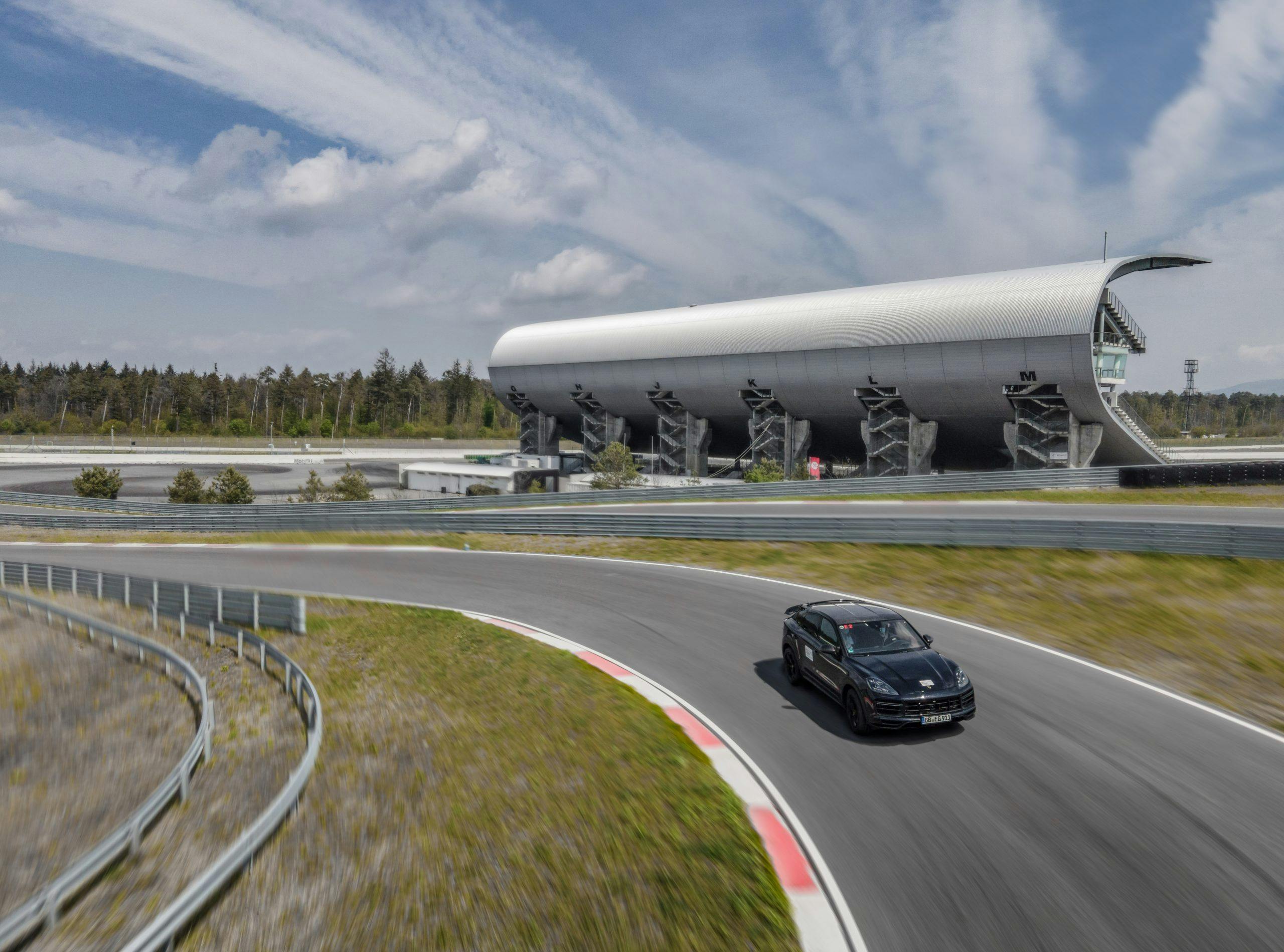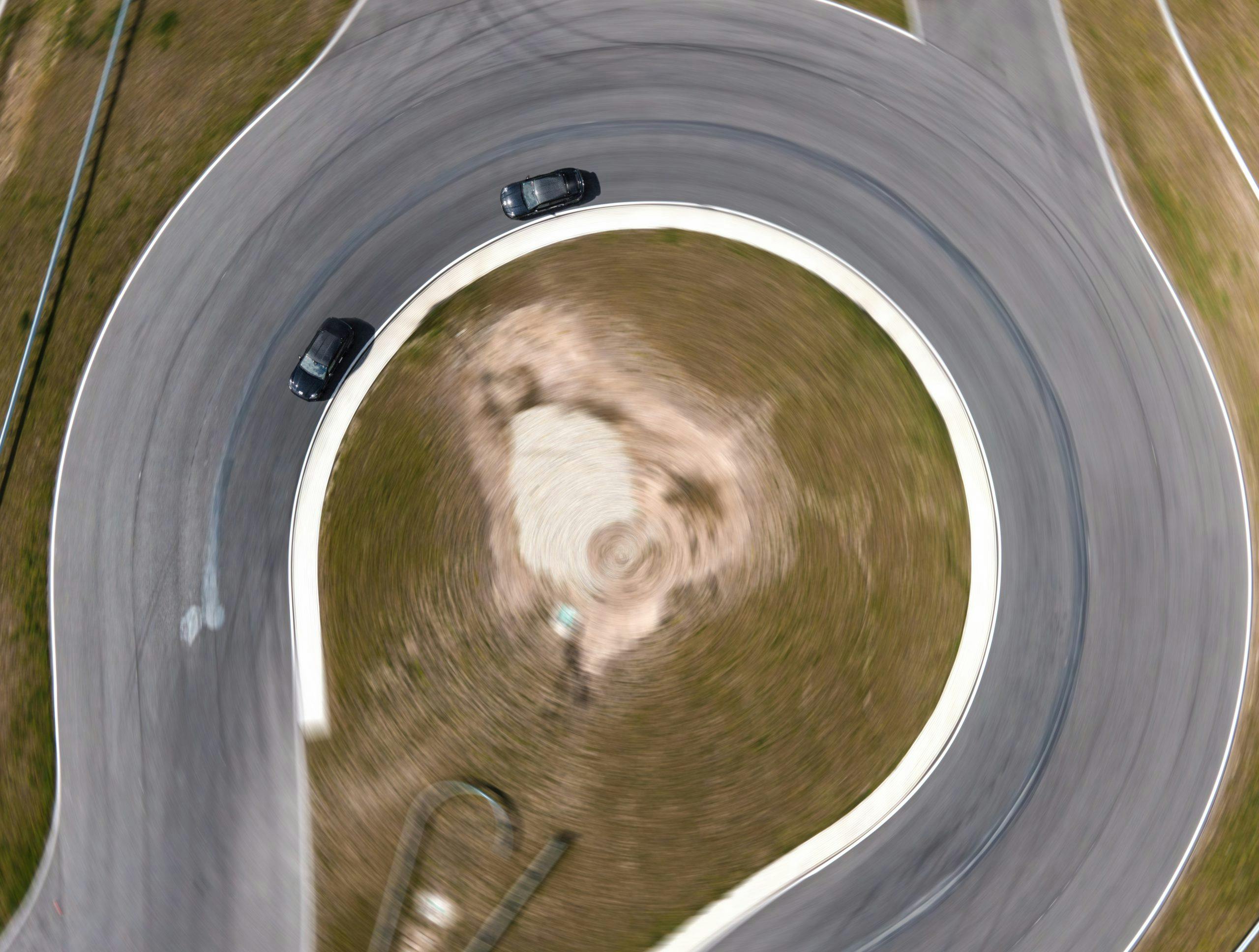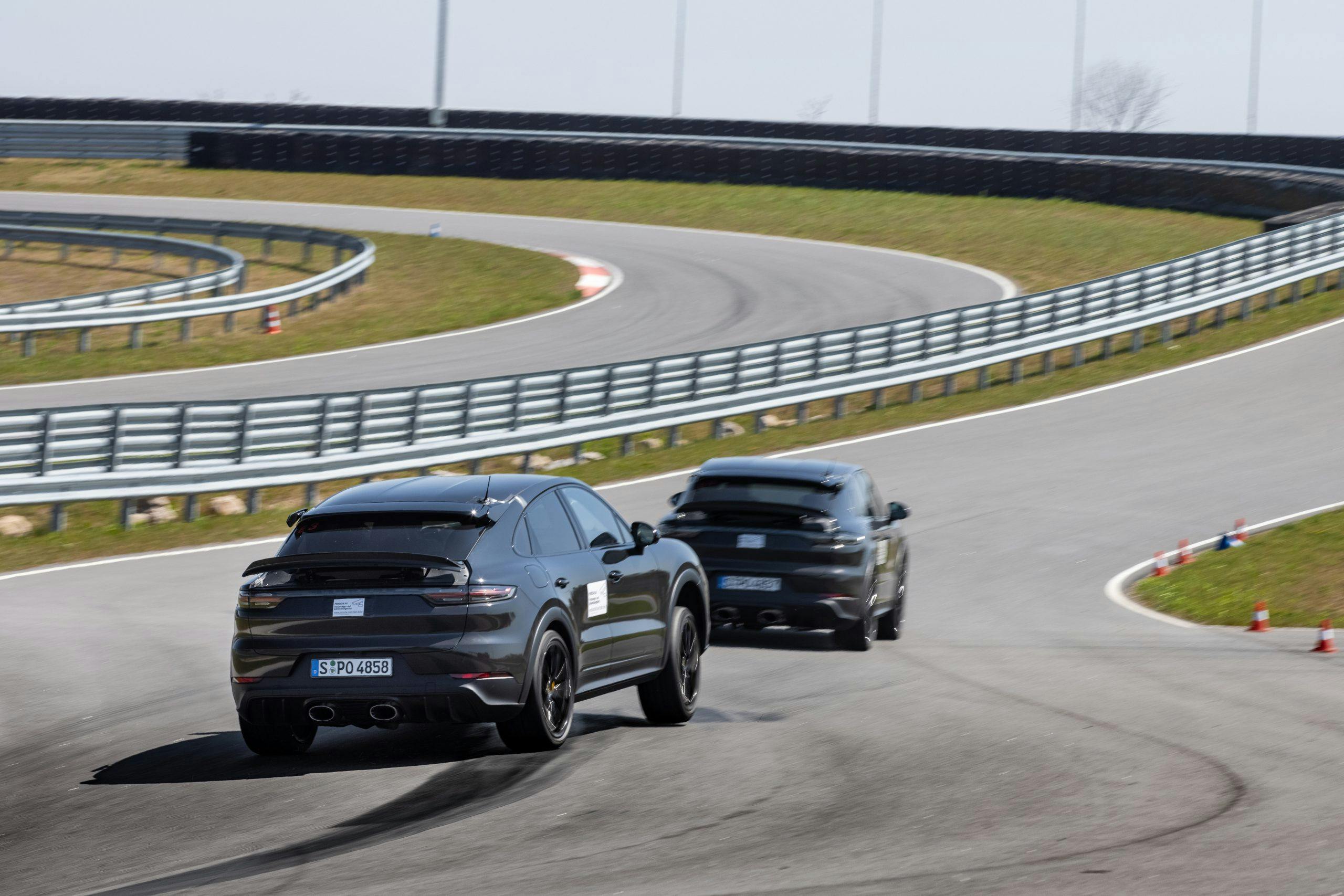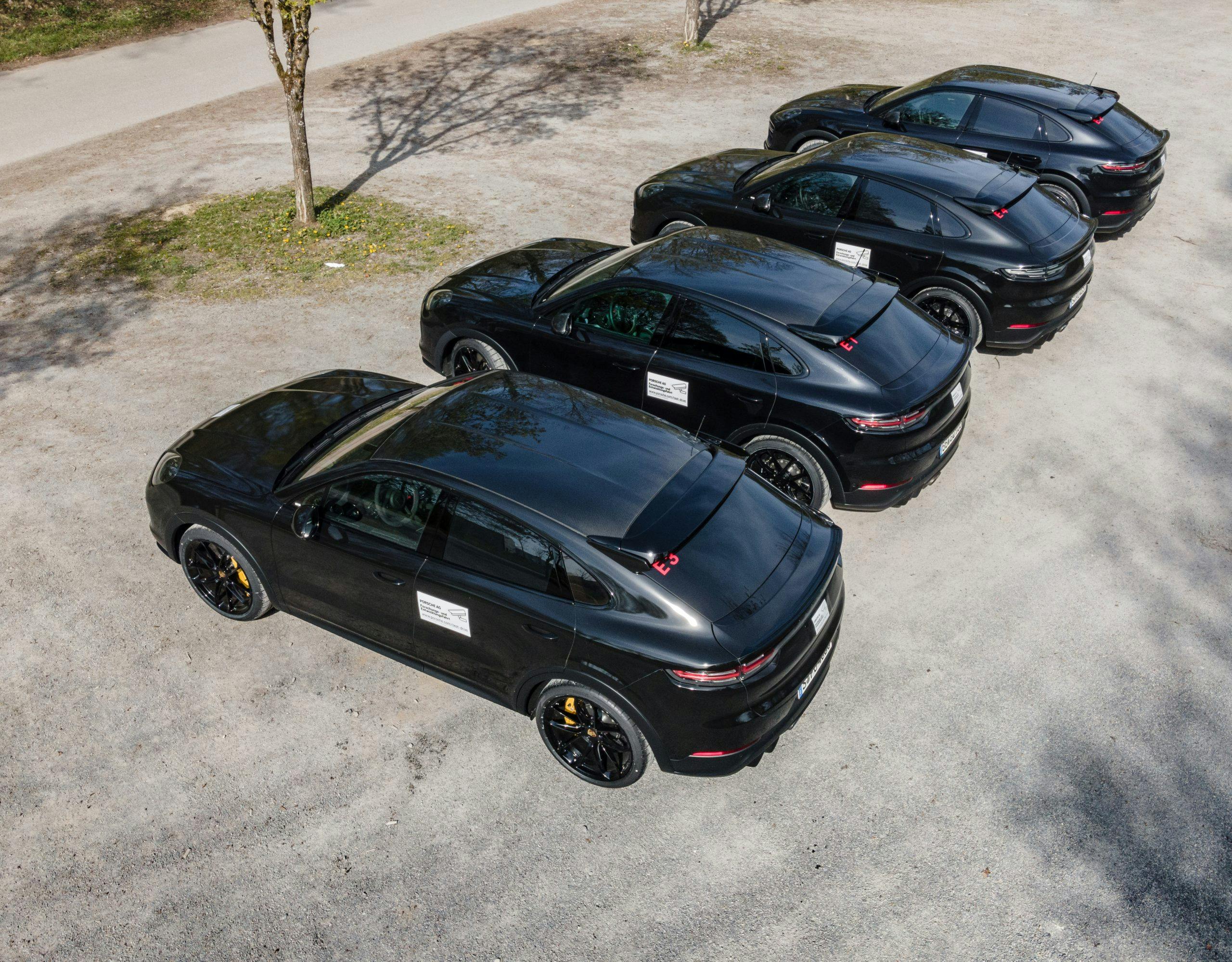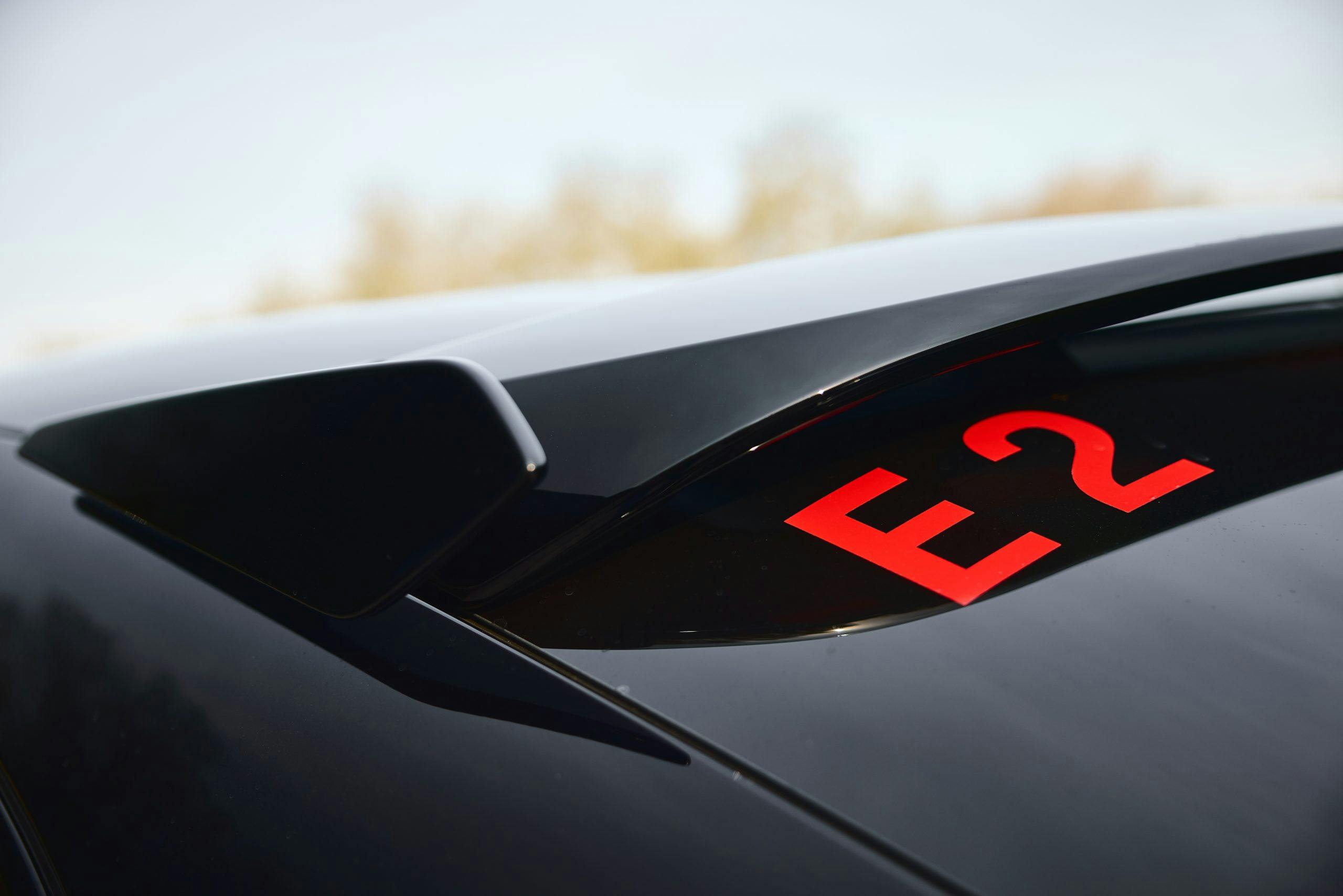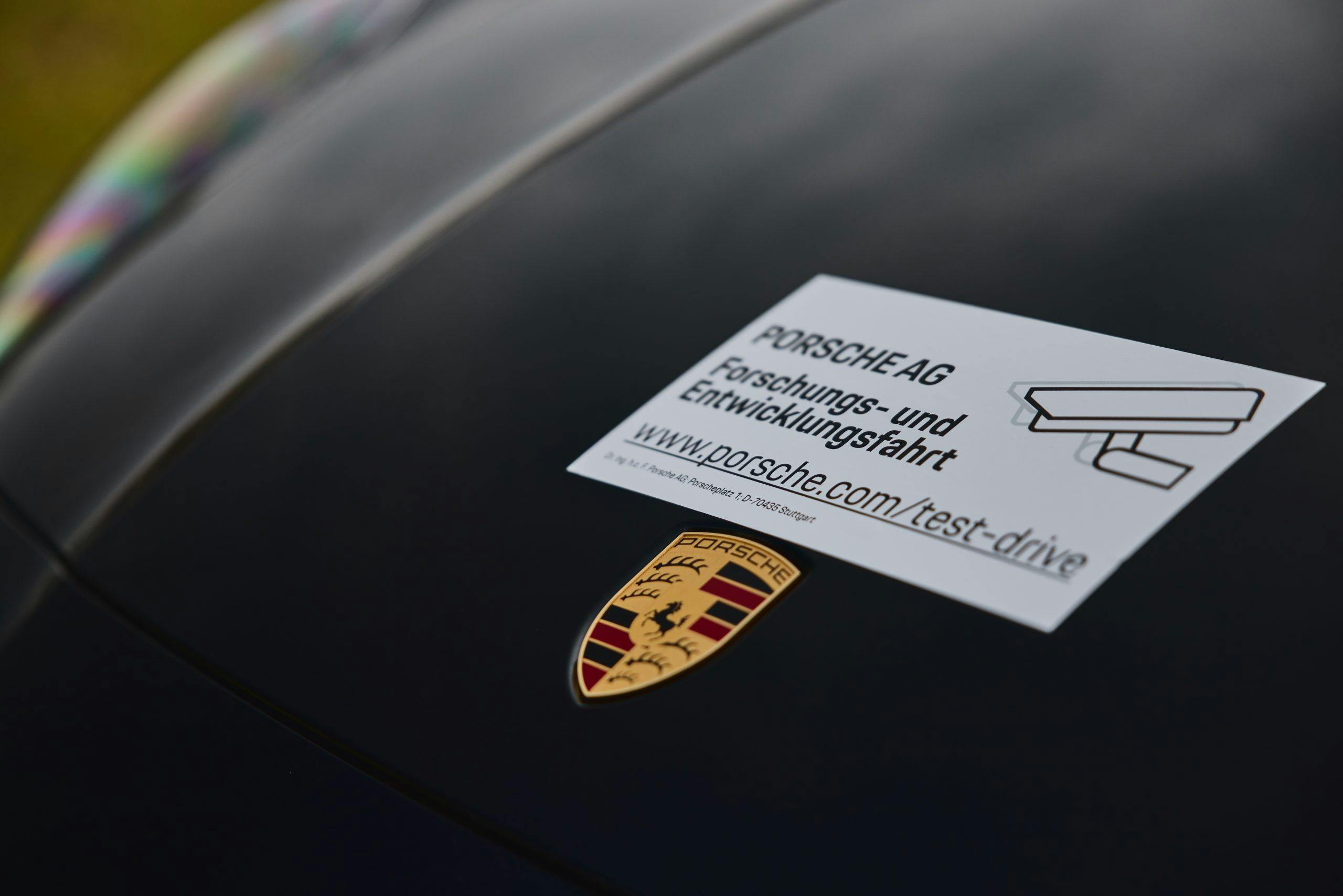We drive Porsche’s 600-plus-hp, V-8-powered über Cayenne prototype
“This one is for the petrolheads,” says Denis Rancak, the Porsche Cayenne’s director of powertrain development, while merging the camouflaged SUV onto the autobahn outside of Stuttgart. The deep bellow of a V-8 gradually builds, echoing through the cabin as the twin turbos spool with a high-pitched whine.
We’re in a prototype of a new, range-topping Cayenne that will be fully unveiled in the summer of 2021. While I can’t reveal its name, I can say that this version has no predecessor in the Porsche range. Stepping out of the established model hierarchy was the most challenging part of the project.
“When we make a GTS, we have a good idea of what we want to change, what we need to improve, and where we want to be. We can use the previous models as reference points. Here, we had no agenda, so we had numerous discussions to decide which elements to use. We had a heated debate about whether to use an air or a steel suspension, for example,” explains Rico Löscher, the Cayenne line’s manager.

Air won the battle against steel in the engineering department. The three-chamber suspension system gives the new kid on the Cayenne block a ride that’s 15 percent firmer than that of the GTS and allows it to sit about half an inch lower. Löscher’s team also tweaked the Dynamic Chassis Control active roll stabilization system for flatter cornering, optimized the torque vectoring system’s cross lock, and added carbon-ceramic brakes.

The rotors are big enough to serve a Thanksgiving turkey, and their mammoth size is necessary because this 185-mph beast of a Cayenne is powered by a twin-turbocharged, 4.0-liter V-8 rated at over 600 hp. (The 2020 Cayenne GTS makes 453 from the same mill; the Turbo model, 503.) True, buyers who select the Turbo S E-Hybrid enjoy 600-plus horses under their right foot, but they must also accept additional weight and a less hardcore suspension.
The V-8 exhales through a titanium exhaust system that looks like it belongs on one of Porsche’s race cars, and it spins all four wheels via an eight-speed automatic transmission and a water-cooled transfer case. Löscher beams with pride as he notes the SUV’s zero-to-60-mph time is about on par with a 911 GT3’s, though that figure hasn’t been finalized.

Black camouflage keeps the new Cayenne’s design under wraps, but no amount of automotive masking tape can conceal the wing attached to its rear end. It’s made out of carbon fiber, and Porsche openly admits it’s there largely to add a touch of visual drama to the Coupe’s profile; the Cayenne wouldn’t try to perform a pirouette without it. Using carbon fiber ensures the part’s weight is insignificant in the grand scheme of things, and it’s positioned where it won’t unduly increase the drag coefficient.
The rest of the visual modifications made to the exterior appear more subtle, especially when you see the Cayenne in full prototype regalia. Look closely, and you might notice that the flaps normally embedded behind the outer air vents in the front bumper are absent; engineers were forced to ditch them to create space for bigger intercoolers. The retractable rear spoiler has grown to provide more downforce at triple-digit speeds, too.
In short, it sounds like engineers ransacked Porsche’s racing division’s parts bin and walked away with anything they could bolt onto a Cayenne.

Once I slide behind the wheel, this SUV’s performance-oriented personality only becomes more obvious. The V-8 easily gets the best of its faint turbo lag to thunder the Cayenne off the line as the eight-speed transmission fires off the shifts, either via paddles or on its own. Shoved back in my seat, I remember Porsche’s astonishing claim that this Cayenne flavor is about as quick as a 502-hp 911 GT3, which takes 3.2 seconds to reach 60 mph from a stop. I didn’t time this truck’s sprints, but the comparison becomes increasingly credible behind the wheel, with foot buried in the throttle, the V-8 at full song, and the German countryside on fast-forward like an old VHS tape.

With all-wheel-drive, a variable torque split, and front tires that are half an inch wider than the Turbo’s, Porsche’s top-dog Cayenne maintains its composure on winding country roads. It’s not the kind of performance vehicle that dramatically overcompensates at every turn to make you feel like a better driver than you really are. Instead, it adapts to the tempo you set, whether that’s full-speed ahead or laid-back. It’s the irony of an SUV like this: Effortless acceleration and quick, precise steering mean you don’t need to flog it to enjoy it. Focus on the road ahead, and on what the front wheels are doing, and you’ll forget you’re in an SUV.
After a few miles of hill climb-esque turns punctuated by picturesque towns, it’s clear Löscher made the right call when he chose to use an air suspension system. It’s more versatile than a steel setup, so it allows the Cayenne to deliver buttoned-down handling when the occasion calls for it and relative comfort when the asphalt changes to, say, cobblestone streets. The familiar driving modes (including Sport+), adjusted using a dial on the steering wheel, are present, but the spread between comfort and performance feels greater than in the GTS. This Cayenne has a completely different character.
Meandering through German forests leads us to the Hockenheimring, where Porsche operates a private experience center with its own circuit. On this track-within-a-track, with a diverse palette of turns and numerous elevation changes, the Cayenne defies its hefty weight with the help of a rear-wheel steering system. Porsche’s suspension wizardry keeps an iron grip on body roll. The carbon-ceramic brakes clamp on those giant rotors and work with newly-developed Pirelli P Zero Corsa tires to haul this 600-hp beast to a stop. It doesn’t feel as sure-footed as a 911, but this Cayenne fires a salvo at those who clamor that an SUV can’t handle like a true Porsche.

Porsche may have chosen the carbon-ceramic brakes, the titanium exhaust, and the carbon-fiber roof panel to save weight, but it didn’t go overboard by gutting the interior. While my test vehicle’s cabin is as camouflaged as its body, it feels no less upmarket than that of a standard Cayenne, complete with leather, screens, stereo, and other amenities you’d expect to find in a Porsche.

One last dance with the Cayenne on Germany’s mountain roads takes us back to the highway. Traffic becomes denser as our convoy approaches Stuttgart, giving me time to reflect on what might be the new yardstick used to measure performance in the SUV cosmos. One of the questions wafting through my brain is why Porsche chose to start this project with a Cayenne Coupe. Wouldn’t it have made more sense to buff up a Panamera, which is lighter and lower? “We really liked the challenge of making it an SUV; we wanted to see how far we could push the body style,” Rancak replies. He adds that the new model will be Coupe-only because the sportier silhouette was a better match for the hot-rodded drivetrain.

As global emissions regulations get tighter and Porsche invests GDP-like sums into electrification and synthetic fuels, is this a stealthy way of bidding auf wiedersehen to the V-8? Surprisingly, and thankfully, no. Löscher concedes it will be difficult to make a business case for a V-8 in a decade, but he stresses that the engine still has several bright years ahead of it before retirement.
Porsche will unveil the ultimate Cayenne in the summer of 2021 as a 2022 model, and sales will start shortly after. Pricing hasn’t been announced yet, but it’s safe to assume that range-topping performance will come with a range-topping price tag. The priciest Cayenne in the current Porsche portfolio, for context, is the $167,550 Cayenne Turbo S E-Hybrid Coupe. Production of this über-Cayenne will not be limited, so expect supply to follow demand.
